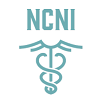Treatment for Paroxysmal Hemicrania in LA
Paroxysmal hemicrania is classified as a rare headache disorder that develops between the ages of 30 to 40. It equally affects both men and women and manifests as a one-sided, excruciatingly painful attack that usually lasts for 2 to 30 minutes and in some cases, even 2 hours.
According to the National Center for Advancing Translational Sciences, around 60% of the patients rate the pain as very severe and give it 10 out of 10 on a pain index. The attacks can start and end abruptly and can occur multiple times throughout the day.
Paroxysmal hemicrania affects around 1 out of 50,000 people.
People with paroxysmal hemicrania describe the pain as excruciating, throbbing, stabbing, burning, sharp, or claw-like. The location of the pain is limited to one side and is usually in the temple area or behind the eye. The symptoms include flushing or sweating of the face, facial or forehead sweating, ear fullness, stuffy or runny nose, tearing or redness of the eyes, and swelling or drooping eyelids.
Other symptoms such as restlessness, agitation, nausea, and sensitivity to light have also been reported. Similar to cluster headaches, paroxysmal hemicrania is also divided into chronic and episodic. Around 80% of all those affected suffer from the chronic form and find no immediate relief with periods of remission often lasting less than a month. The headache is classified as episodic if the remission period exceeds 30 days.
The cause of paroxysmal hemicrania is unknown. Patients report common triggers such as exercise, alcohol, stress, external pressure to the neck, or certain neck and head movements.
The most common treatment for paroxysmal hemicrania is a medication known as indomethacin that helps prevent the onset of the symptoms. Other medications include oxygen, nerve blockade, and Imitrex.
Dr. Farzin Pedouim is a board-certified neurologist and headache disorder specialist in Huntington Beach and Los Angeles. He uses effective medication and treatment methods to prevent the symptoms of paroxysmal hemicrania.
